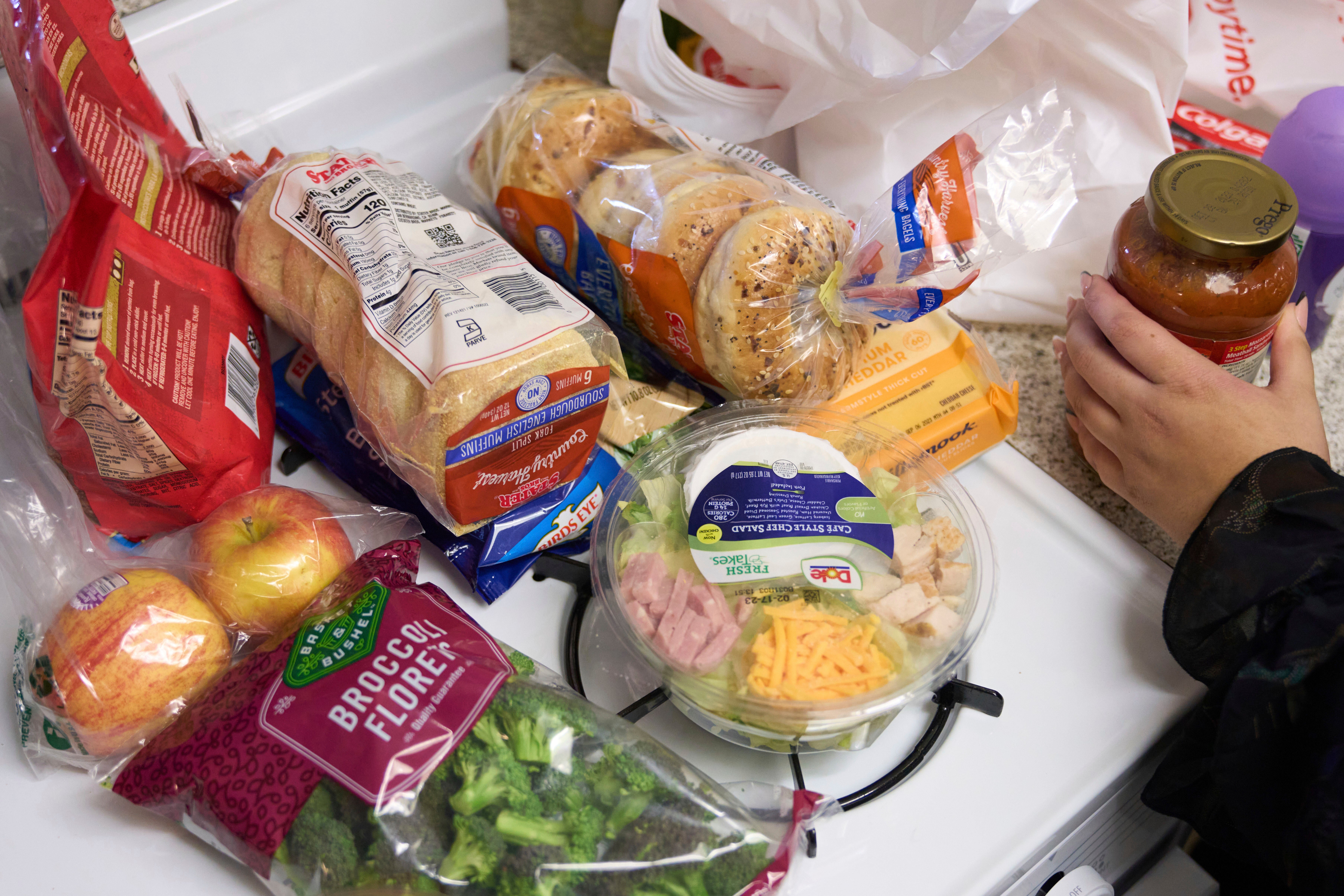LOCALIZE IT: End to extra COVID food aid affects millions

Your support helps us to tell the story
From reproductive rights to climate change to Big Tech, The Independent is on the ground when the story is developing. Whether it's investigating the financials of Elon Musk's pro-Trump PAC or producing our latest documentary, 'The A Word', which shines a light on the American women fighting for reproductive rights, we know how important it is to parse out the facts from the messaging.
At such a critical moment in US history, we need reporters on the ground. Your donation allows us to keep sending journalists to speak to both sides of the story.
The Independent is trusted by Americans across the entire political spectrum. And unlike many other quality news outlets, we choose not to lock Americans out of our reporting and analysis with paywalls. We believe quality journalism should be available to everyone, paid for by those who can afford it.
Your support makes all the difference.EDITORS/NEWS DIRECTORS:
The U.S. government is ending the extra money for food provided to low-income people since the beginning of the COVID-19 pandemic.
The Supplemental Nutrition Assistance Program has long been known as food stamps, even though the money is now loaded onto Electronic Benefits Transfer Cards, which are used like debit cards at participating stores.
Initially, all U.S. states participated in the program and provided their residents with more SNAP money. But by January, 18 states had rolled back the extra benefits, often along with the end of local emergency declarations. That reduced aid to more than 10 million Americans.
In 32 states, Washington, D.C., Guam and the U.S. Virgin Islands, the extra benefits end with February payments. Starting in March, about 30 million people will see cuts in the amounts loaded to their SNAP cards. The average recipient will lose about $90 a month, though some cuts could be much larger.
Congress struck a budget deal in late December that traded the emergency SNAP allocations to fund a permanent program to replace school meals during the summer for low-income children.
___
READ AP's STORY
U.S. ending extra help with groceries that started during COVID
___
ADD LOCAL CONTEXT
— Is your state among those where benefits will end with the last payment in February? See the list of affected states and jurisdictions below.
— To learn how many people in your state get SNAP benefits and the total amount received, check the USDA data here: https://www.fns.usda.gov/pd/supplemental-nutrition-assistance-program-snap
— For information about how people qualify for SNAP and how much money they receive: https://www.fns.usda.gov/snap/recipient/eligibility
— Individual states are responsible for notifying SNAP recipients about the coming cuts. Contact your state's SNAP agency to ask about those efforts: https://www.fns.usda.gov/snap/state-directory
— To find SNAP recipients to interview about the importance of the program and concerns about the end of the emergency benefits, reach out to food banks, pantries and organizations that advocate for low-income people. Find food banks in your area here: https://www.feedingamerica.org/find-your-local-foodbank
___
STATES AND JURISDICTIONS WHERE EXTRA BENEFITS ARE ENDING
Alabama
California
Colorado
Connecticut
Delaware
District of Columbia
Guam
Hawaii
Illinois
Kansas
Louisiana
Massachusetts
Maine
Maryland
Michigan
Minnesota
New Hampshire
New Jersey
New Mexico
New York
Nevada
North Carolina
Ohio
Oklahoma
Oregon
Pennsylvania
Rhode Island
Texas
Utah
Vermont
Virginia
Virgin Islands
Washington
West Virginia
Wisconsin
___
Localize It is an occasional feature produced by The Associated Press for its customers’ use. Questions can be directed to Katie Oyan at koyan@ap.org.
Subscribe to Independent Premium to bookmark this article
Want to bookmark your favourite articles and stories to read or reference later? Start your Independent Premium subscription today.